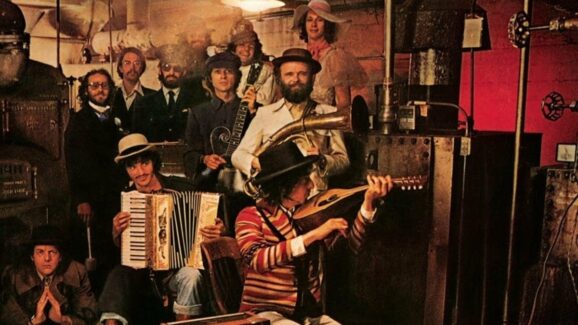In this year of Charlie Parker’s Centennial there have been multiple events, tribute recordings and various nods to the iconic “Bird” a as he is most popularly known. Craft Recordings now releases the compact disc edition of The Savoy 10-Inch LP Collection, which spotlights Charlie Parker’s groundbreaking bebop sessions for the legendary jazz label (spanning 1944 to 1948), already available on vinyl and digital formats. The CD edition features 28 tracks from the four legendary Savoy 10-inch LPs, presented with newly restored and remastered audio and a deluxe 20-page booklet containing vintage photos, rare ephemera and liner notes from GRAMMY® Award-winning journalist and author Neil Tesser. These historic recordings feature such peers as Miles Davis, Dizzy Gillespie, John Lewis, Bud Powell and Max Roach. Even as this writer listens with headphones on, the pristine quality of such vintage recordings is remarkable. For those that don’t have many Bird recordings in their collections, or even for those who do, this is a MUST.
When alto saxophonist Bird and his contemporaries introduced bebop in the ’40s, they ushered in a bold new style that would influence modern music for decades to come. Many of those strains still live with us today. Nowadays, as Neal Tesser argues in the box set’s liner notes, it’s easy to forget that bebop was considered avant-garde. “Bebop undergirds such a vast swath of American music that its revolutionary nature recedes into the background. It is now so familiar and comfortable, such an ever-present part of the family history, that non-historians can hardly envision it ever being ‘revolutionary.’” However, when listeners heard this new sound for the first time, it was unlike anything they had experienced before. Up until this point, audiences enjoyed swing-era big bands performing standards from the Great American Songbook, led by the likes of Louis Armstrong, Duke Ellington and Benny Goodman. It’s also worth noting that—to those who were not entrenched in the jazz scene—this new style of music seemingly came out of nowhere. Though bebop evolved in the early part of the decade—cultivated in New York’s late-night jazz clubs—it didn’t appear on record until the mid-’40s, following a two-year strike by the Musicians’ Union, which banned commercial recordings for labels, due to royalty disputes.
These 28 tracks on The Savoy 10-Inch LP Collection are some of the world’s earliest bebop recordings, including takes from a November 1945 date that is often referred to as “The Greatest Jazz Session Ever,” featuring Davis, Roach and Curley Russell appearing as “Charlie Parker’s Reboppers.” The tracks were compiled by Savoy and released over the next several years as the four LPs reissued in this box set: New Sounds In Modern Music, Volume 1 (1950), New Sounds In Modern Music, Volume 2 (1951), as well as Volumes 3 and 4 (both released in 1952). Nearly all the compositions heard in this collection are originals by Parker, with a few contributions by Davis, and an original tune from guitarist Lloyd “Tiny” Grimes—who led Parker in the session for “Tiny’s Tempo.” Highlights include the upbeat “Now’s the Time,” the bluesy “Parker’s Mood” and “Constellation,” which Tessler notes “seems to anticipate the free-jazz energy solos of the 1960s.”
Also notable is “Ko-Ko,” featuring an impressive improvisation from the saxophonist, as well as one of Bird’s most recognizable tunes, “Billie’s Bounce,” which was inducted into the GRAMMY® Hall of Fame in 2002. Others you will likely recognize are “Donna Lee,” “Bird Gets the Worm,” “Steeplechase,” “Milestones,” and “Half Nelson.” Though multiple styles of bop would become mainstream by the end of the ’50s, these recordings mark the beginning of a new era and a radical shift in musical trends. It was a sound that, Tesser declares, was “at once liberating but also threatening. Charlie Parker and his fellow instigators…sparked a cultural earthquake that upended the music landscape for decades.”
>Although Bird only lived until the age of 34, he was a visionary, altering the course of music in his wake, and paving the way for hard bop, free jazz, fusion and beyond. Like Louis Armstrong, Duke Ellington, Miles Davis and John Coltrane, Parker was a pioneering composer and improviser who ushered in a new era of jazz and influenced subsequent generations of musicians, writers, and artists. (This writer is tempted to add Monk to that esteemed list). Miles Davis once said, “You can tell the history of jazz in four words. Louis Armstrong and Charlie Parker.” Four of his recordings were inducted into the GRAMMY Hall of Fame including albums Charlie Parker With Strings and Jazz At Massey Hall and the songs “Ornithology” and “Billie’s Bounce.” In 1974, he was awarded a posthumous GRAMMY for Best Performance By A Soloist for “First Recordings.” In 1988, the Clint Eastwood-directed biopic “Bird” brought his story to film. The U.S. Postal Service issued a commemorative stamp in his honor in 1995. The Parker composition “Koko” was included in the National Recorded Registry in 2002, declaring the song as “culturally, historically, or aesthetically important, and/or inform(s) or reflect(s) life in the United States.”









